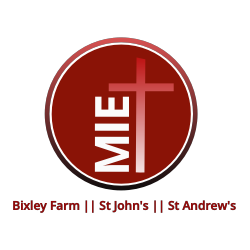In the question of whether children should be invited to join the family of God around the Table, we must, as in all other questions start with what the Bible teaches. If there is something in the pages of Scripture that precludes it, the conversation is closed. Only a Church with a pathological tendency towards self-destruction goes against what it knows the Bible to teach. On the other hand, if we discover there is Biblical warrant for the admission of children to communion after baptism, then Church policy must be brought into line. This tendency to on-going reformation in the light of Scripture is something built into Anglican self-understanding. Article 6 of the Church holds that we must not be asked to believe anything that is contrary to Scripture: ‘Whatsoever is not read therein, nor may be proved thereby, is not to be required of any man (sic), that it should be believed as an article of the faith, or be thought requisite or necessary to salvation’.
We have seen in our articles on Baptism that at the heart of Biblical theology beats the truth that God relates to humanity through the structure of covenant. God as it were, binds Himself to His people in a defined relationship of promise and commitment. We have also seen that the covenant of grace cut with Abraham was (and remains) corporate in nature. That covenant was confirmed through a rite of initiation (circumcision, later baptism) which opened to the initiated the right to participate fully in the privileges of that covenant.
In the New Testament, this framework is not destroyed, but fulfilled. Christ is portrayed as the true Israel, the Seed of Abraham in whom all the nations of the earth find blessing. Christ also fulfils the ‘shadow’ system of sacrifice and worship, and focusses the conditions of the covenant exclusively on Himself and His work. But the covenant continues to function identically throughout the NT. The Mediator is the same (Christ), the condition is the same (faith), and the blessings are the same (e.g. justification, regeneration and eternal life). The NT Church recognises its deep continuity with the OT ‘congregation’ of Israel, and is superimposed on its patterns.
Given this covenantal unity, it is a short step to recognise that the sacraments instituted by Christ (baptism and communion) are the same in substance as the sacraments of the OT. The Abrahamic rite of circumcision is carried through into the Mosaic covenant, as Israel are the seed of Abraham. We have already seen how this is re-constituted in baptism, the two rites functioning in exactly the same capacity.
Of particular relevance to our considerations in this article is the realisation that once children were circumcised, they were incorporated into the life and worship of the people of God.
As such, they were consistently granted both the privileges and responsibilities of participating fully in the religious life of Israel. Thus children were present when the covenant was renewed (Dt. 29:10-13; Joel 2:16). Children were also present during times of teaching, and in religious festivals. Of particular note is their presence at and involvement in the Passover meal (Ex.12, esp.v.26). The whole family ate the Passover, which is explicitly corporate in its orientation, encompassing (like circumcision) the entire family (Ex.12:3f). Indeed, it was a first born son (who in many families would have been a young child) who was the primary beneficiary of the original Passover!
Why is this significant? Because it was the Passover that Christ re-cast and instituted as the meal of Holy Communion (Matt.26:26-27 / Mark 14:22-24; Lk 22:15, ‘I have eagerly desired to eat this Passover with you…’). In the same way as circumcision, when fulfilled in Christ becomes baptism, so Passover, when fulfilled in Christ, becomes the rite that we now call Eucharist, Communion, the Lord’s Supper etc. The meaning continues unchanged and unchanging, but the rite is altered to reflect it’s being fulfilled. The lamb is replaced by the bread (body) and wine (blood) of the Lamb of God who takes away the sin of the world (Jn.1:29). As the Apostle Paul was to put it only a few years later: ‘Christ, our Passover Lamb, has been sacrificed…’ (I Cor.5:7). No other lamb is to be slain, and lamb is no longer the sign of the covenant meal. The one to whom the Lamb pointed has been sacrificed and so it is now His body and blood we remember. Passover is antecedent to Communion in the same way that circumcision is antecedent to baptism, and again, in the absence of any teaching to the contrary, we recognise that the dynamics of the sacrament remain unchanged.
What does this mean? I submit that it means that in the same way as the whole family (including circumcised children) in the Old Covenant were included in the Passover meal, so baptised children in the New are included in their sacramental meal – communion. As such children – having been initiated into the family of the Church - are nurtured within it, growing into an understanding of what they are doing, asking questions about what we do and why. As in Deut.12 however, those questions are asked by children who participate, not by those who are on the outside looking in. This follows from Scripture, and also from thinking consistently about the Bible’s teaching on the theological connectedness of Sacraments themselves – something we’ll look at more fully next time. There is an inseparable connection between the two sacraments, so that those who are baptised are obligated to partake of the Communion, and those who take the bread and wine are those who have been baptised. Communion isn’t a superior sacrament, to be reserved only for those who are sufficiently advanced in the ways of Christ. Indeed, it is precisely the opposite – it is the means by which we who are weak can be nurtured so that we might grow in the ways of Christ.
